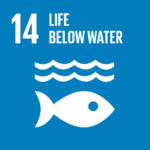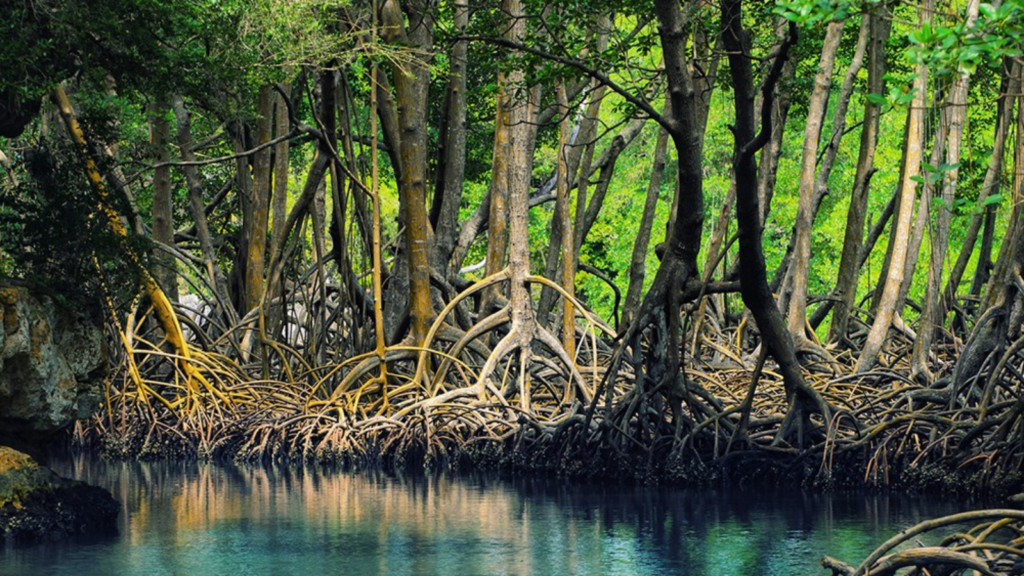RELEVANT SUSTAINABLE GOALS



Scoping how changes in mangrove coverage impacts nature
It found that between 1996-2020, global mangrove coverage decreased by 3.4 per cent – or 5,245 km2 – however, encouragingly in recent years mangrove decline has stabilised, with gains around many of the world’s large rivers, estuaries and deltas offsetting further losses.
To-date, the link between mangrove ecosystems and the wildlife they support and services they provide has not been well studied – our new analysis gives a first look at how changes in mangrove extent is impacting on biodiversity, carbon and fisheries.
Dr Chris McOwen, report lead author and UNEP-WCMC Lead Marine Scientist
- For marine vertebrates – species ranging from fish, turtles, whales, dolphins, porpoises, otters, seals, crocodiles, alligators and manatees – the Asia-Pacific and Americas (especially Indonesia, the USA, Ecuador and Cuba) are predicted to have experienced highest changes (gain and loss) in species between 1996 and 2020.
- For terrestrial vertebrates – from frogs to lizards, snakes, bats, monkeys, sloths, tigers and rodents – the Asia-Pacific (Indonesia and Australia in particular) and Mexico and Cuba are predicted to have experienced the greatest species changes.
- For plants – from “true” mangrove trees and shrubs, to orchids, vines and salt-tolerant herbs, shrubs and climbers – Indonesia, Australia and American territories – including Panama, Brazil and Colombia – were found to be especially important habitats, with the greatest losses in plant species estimated to be in Indonesia.
- For more than 1,000 bird species – ranging from dependent species such as the Bended Rail in the Pacific region, to migratory visitors such as herons – the Asia-Pacific was found to be especially important, but with high species loss seen in Indonesia. Several countries across the Americas and Africa are also of high importance, and Ecuador has seen a large boost as a hotspot for avian biodiversity, potentially linked to increases in mangrove area in and around the mangrove-dense Manglares Churute Reserve.
To ensure global targets and efforts to protect and restore natural ecosystems really do benefit nature, we need ongoing investigation to understand what the consequences of our actions to conserve, restore and sustainably use habitats like mangroves means for species. We hope our analysis will encourage ongoing research to deepen our understanding of the relationship between mangroves and nature, and to help prioritise restoration efforts.
Dr Chris McOwen, report lead author and UNEP-WCMC Lead Marine Scientist
Progress on Mangrove Depends On Harmonised Action
I hope that this publication will serve to inspire governments around the world to embrace mangroves as a nature-based solution and to take action to protect, restore, and sustainably manage the magical mangrove forests that provide vast ecosystem services for nature, people and the planet.
Leticia Carvalho, Head of Marine and Freshwater Branch, UNEP
- Discover more about mangrove coverage and biodiversity, along with other crucial blue ecosystems, via the new UNEP Deep Dive visual feature.
- Find out more about the distribution of various marine habitats around the world – including mangroves, corals, seagrass meadows and saltmarshes – and the extent of their inclusion in protected areas via UNEP-WCMC’s Oceans+ Habitats platform.
You may also be interested in :
Mapping Blue Carbon : The Collaborative Efforts Of The Nature Conservancy and Planet Labs



